It is our hope that the pictures and descriptions in this section will assist you in discovering the identity of your pottery sherds and the history behind them. If you are unable to identify your finds from this list, please feel free to contact me (Lloyd Schroder – see CONTACT US) with pictures of your discoveries and information regarding their general location. The pictures should include a clear picture of surface decoration, rim structure (if possible), the interior of the vessel, and a cross-section of the sherd. I will make every effort to respond as quickly as possible to your requests.
(Left) Bruce Butts collection, (Right) Mike Stokes Museum of Southeastern Indians
Mike Stokes Museum of Southeastern Indians
RESEARCH: Philip Phillips, James Ford, and James B. Griffin defined this type from their survey of Mississippi in 1951. Their definition of the type was reprinted in the Handbook of Mississippi Pottery Types, SEAC Bulletin No.7 in 1968.[i]
TEMPER: This type was tempered with crushed shell particles with a wide range in size, sometimes causing the clay to swirl and be contorted. Sherds display the lamination characteristic of shell tempered pottery. The paste also has open spaces due to the poor wedging of the clay. Surface colors are normally buff with core colors similar due to uniform firing. Red surfaces with gray cores are also known. Surfaces are smoothed with rare moderate polishing, although rough surfaces occur due to shell particles leaching out of the surface.
SURFACE DECORATION: Decoration on this type consists of wide bands or zones of red and white paint separated by narrow bands of black paint. Known design patterns include encircling bands, simple geometric zoning, spirals, meanderings, and spiral swastikas. Red paint was made from hemitite, White from galena and black from graphite.
VESSEL FORM: Sherds indicate that vessels are jars, bowls and bottles.
CHRONOLOGY: The type is generally thought to belong to the Mississippian period, probably the Nodena culture, but a definite range is unknown.
GEOGRAPHIC DISTRIBUTION: Recoveries indicate that this type was widely used within the northwest Mississippi area surveyed by Phillips, Ford, and Griffin. Recoveries by C.B. Moore indicate a distribution into Arkansas and perhaps western Tennessee.
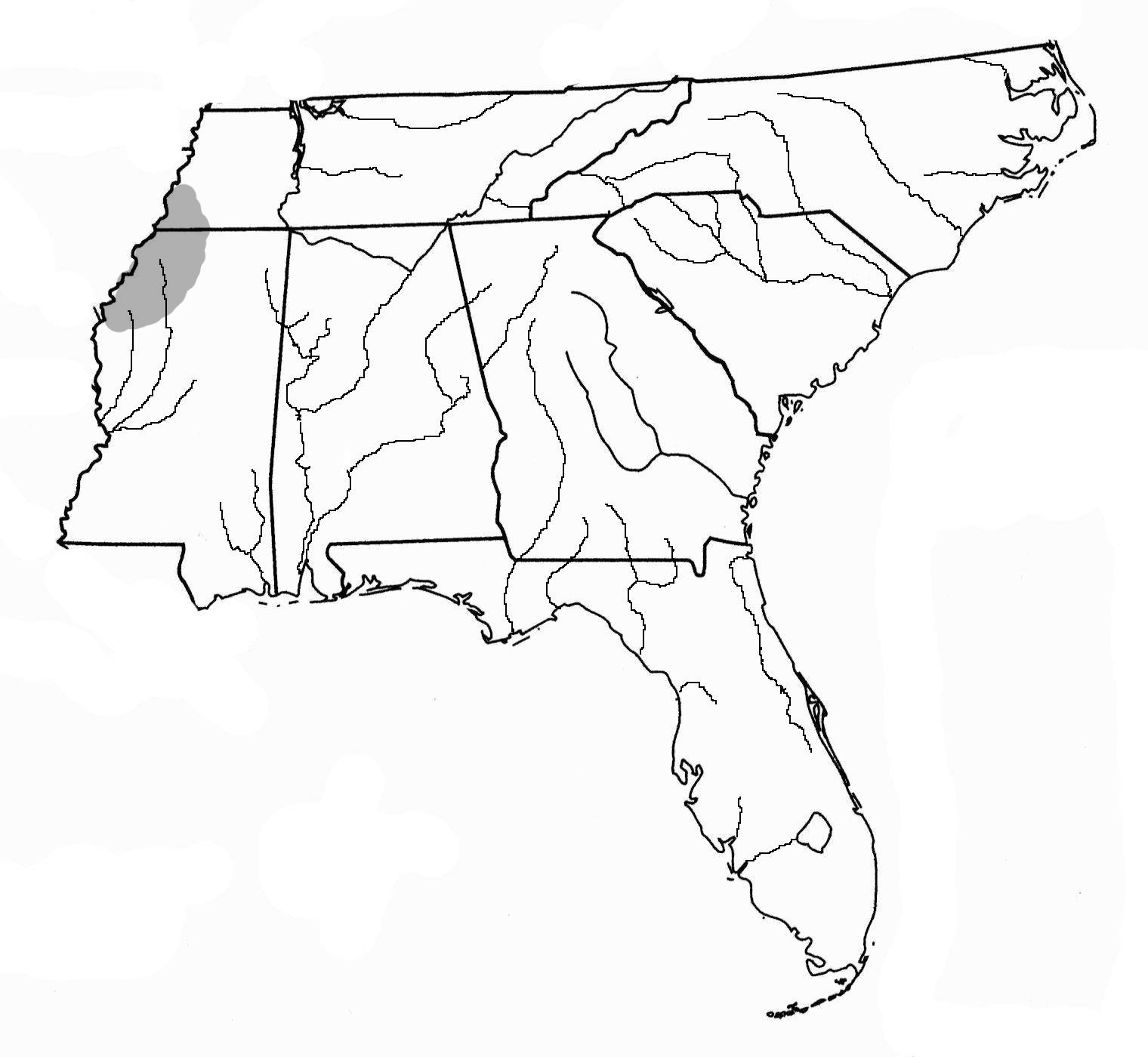
[i] Thorne, Robert M. and Bettye J. Broyles, Handbook of Mississippi Pottery Types, SEAC Bulletin No.7,1968
(Right) C.B. Moore Fig.80 from Pecan Point, Arkansas (Left) Mike Stokes Museum of Southeastern Indians
Mike Stokes Museum of Southeastern Indians
RESEARCH: Philip Phillips, James Ford, and James Griffin defined this type from their survey of Mississippi in 1951. Their definition of the type was reprinted in the Handbook of Mississippi Pottery Types, SEAC Bulletin No.7 in 1968.[i]
TEMPER: The type is tempered with coarse shell particles. Surfaces and core tend to be lighter shades of buff. Reddish shades tend to have gray cores. Interior and exterior surfaces are smoothed with an occasional light polish; however erosion causes the shell to leach out giving the sherd a rough exterior.
SURFACE DECORATION: Broad bands of slip-like paint were applied directly to the buff surface of this type. Designs are most commonly spiral meanders and swastika spirals, a spiral arrangement of alternating vertical panels or a stepped design. The treatment is always broad and relatively crude.
VESSEL FORM: This type emphasizes bottle forms that often have added basal features including tripod supports, annular rings and disc structures. Bowl forms are less often painted and jars are devoid of paint.
CHRONOLOGY: This type is assigned to the Mississippian period.
GEOGRAPHIC DISTRIBUTION: The type is scattered across northwestern Mississippi and Arkansas.
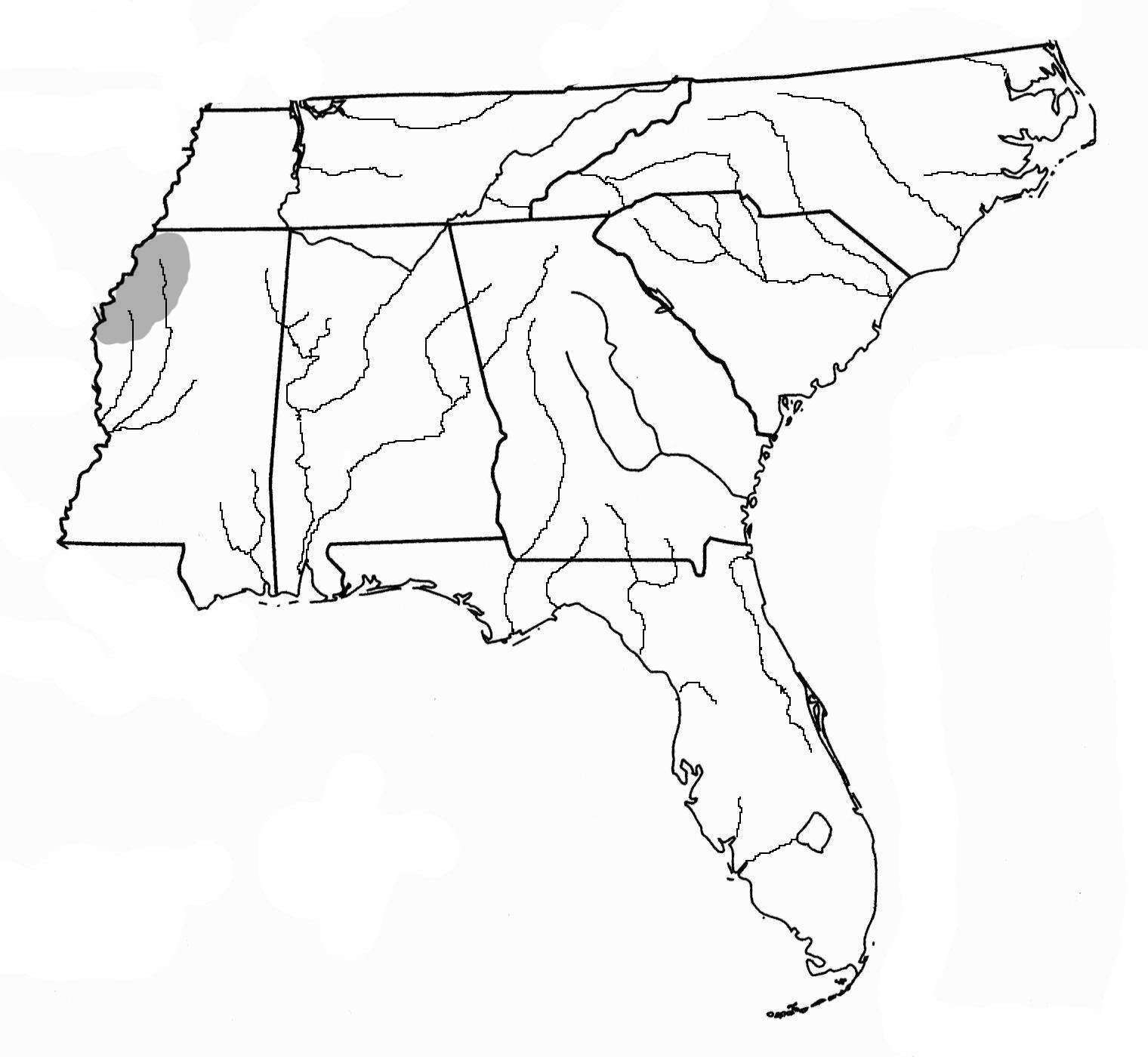
[i] Thorne, Robert M. and Bettye J. Broyles, Handbook of Mississippi Pottery Types, SEAC Bulletin No.7,1968
C.B. Moore 1911 Pl.XIX, Lincoln County, Arkansas near Douglas
RESEARCH: Philip Phillips, James Ford and James Griffin defined this type in 1951 from their survey of Mississippi archaeological sites. Their work was reprinted in the Handbook of Mississippi Pottery Types that appeared in Bulletin No.7 of the Southeastern Archaeological Conference in 1968.[i]
TEMPER: This is a coiled pottery type with coarse shell tempering with a wide range in particle size. Sherds display the lamination and poor wedging typical of shell-tempered pottery. Paste swirling and contortion are often evident. Surface colors range from buff to red with gray cores in red sherds.
SURFACE DECORATION: The surface was plain with a white slip added to the exterior and, at times, to the interior surfaces of the vessel.
VESSEL FORM: Recovered sherds indicate a large bowl with flared sides, a flat rim and a flat lip. A bottle form is also indicated. One sherd suggested a circular flat base. The only known appendages are small nodes. (The vessels pictured above do not fit all of these characteristics, but do have the described white slip, flat lip or nodes described and were recovered nearby on the lower Arkansas River.)
CHRONOLOGY: The Hollywood White Filmed pottery belongs to the Mississippian period.
GEOGRAPHIC DISTRIBUTION: Known examples are from the Hollywood and Owens sites in northwest Mississippi, but, given the similar examples from the Arkansas River, might be expected to appear in a limited area of eastern Arkansas.

[i] Thorne, Robert M. and Bettye J. Broyles, Handbook of Mississippi Pottery Types, SEAC Bulletin No.7,1968
Mike Stokes Museum of Southeastern Indians
RESEARCH: James Ford and Gordon Willey first defined this type in 1939. Caryn Y. Hollingsworth discussed this type in 1991.[i] Hollingsworth did his research at the Sheep’s Bluff Shelter site in Franklin Co, Alabama.
TEMPER: This is a coiled pottery type that is clay-tempered with minor amounts of sand and vegetable matter with a lumpy surface. The paste is generally gray, but has a slip added that ranges from orange to red in color.
SURFACE DECORATION: The exterior, and often the interior surface of the vessel, was covered with an orange to red slip that has been fired onto the surface. Beside the slip, incised lines may be added to the rim. Where the rim has been thickened, an incised line may appear under the rim and punctations may be on the interior or exterior rim.
VESSEL FORMS: Vessel forms include open and incurved bowls and jars and shouldered jars. Rims may have either interior or exterior folds and are often thickened.
CHRONOLOGY: This type first appeared during the Middle Woodland period, but may have lasted into the Early Mississippian period between A.D. 500 and A.D. 1000.
GEOGRAPHIC DISTRIBUTION: This type occurs frequently within the upper Tombigbee River watershed, but is most plentiful in the lower Mississippi Valley.
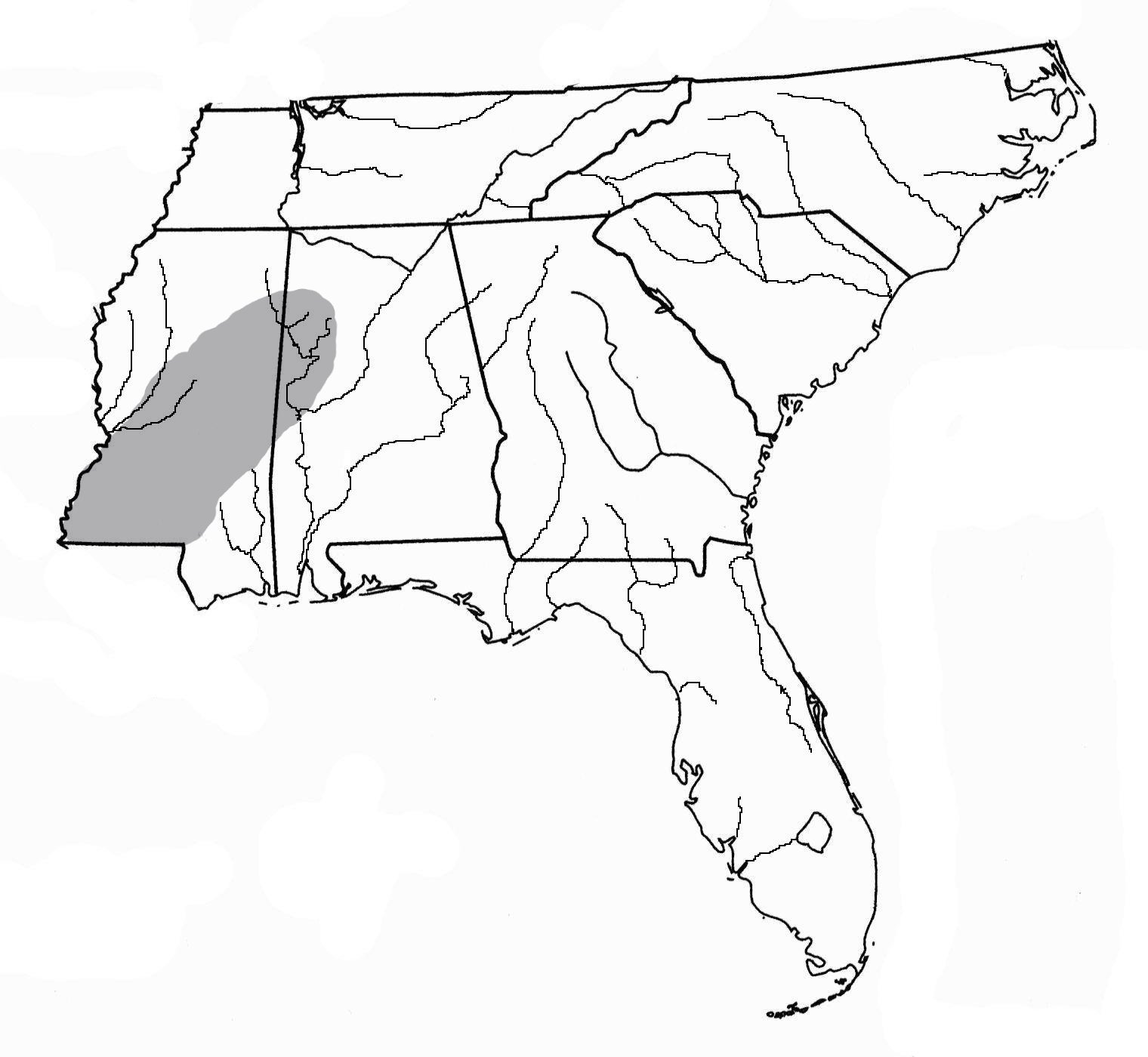
[i] Hollingsworth, Caryn Y. Ceramic Descriptions and Discussion, Journal of Alabama Archaeology Vol. 37, p.101
C.B. Moore 1905
RESEARCH: This type was defined by Douglas H. McKenzie in 1965.[i] McKenzie cited examples recovered by C.B. Moore from the mounds on the Black Warrior River. Of the five pottery types named by McKenzie from this site, there were a total of 404 full vessels available and over 97,000 sherds, over 81% of which were plain. These vessels are ceremonial in nature.
TEMPER: Fine crushed shell was used as temper in this type. The exterior of the vessels appear as a polished black surface.
SURFACE DECORATION: The surface of this type is void of any decoration with the exception of the black filming that covered the entire exterior surface.
VESSEL FORMS: These are the same vessel forms that are seen in other Moundville pottery types including water bottles and collared globular jars.
CHRONOLOGY: The Moundville series of pottery is believed to be part of the Middle Mississippian period.
GEOGRAPHIC DISTRIBUTION: Distribution for this type is the Northwest Florida coast to perhaps the upper Tombigbee River valley.
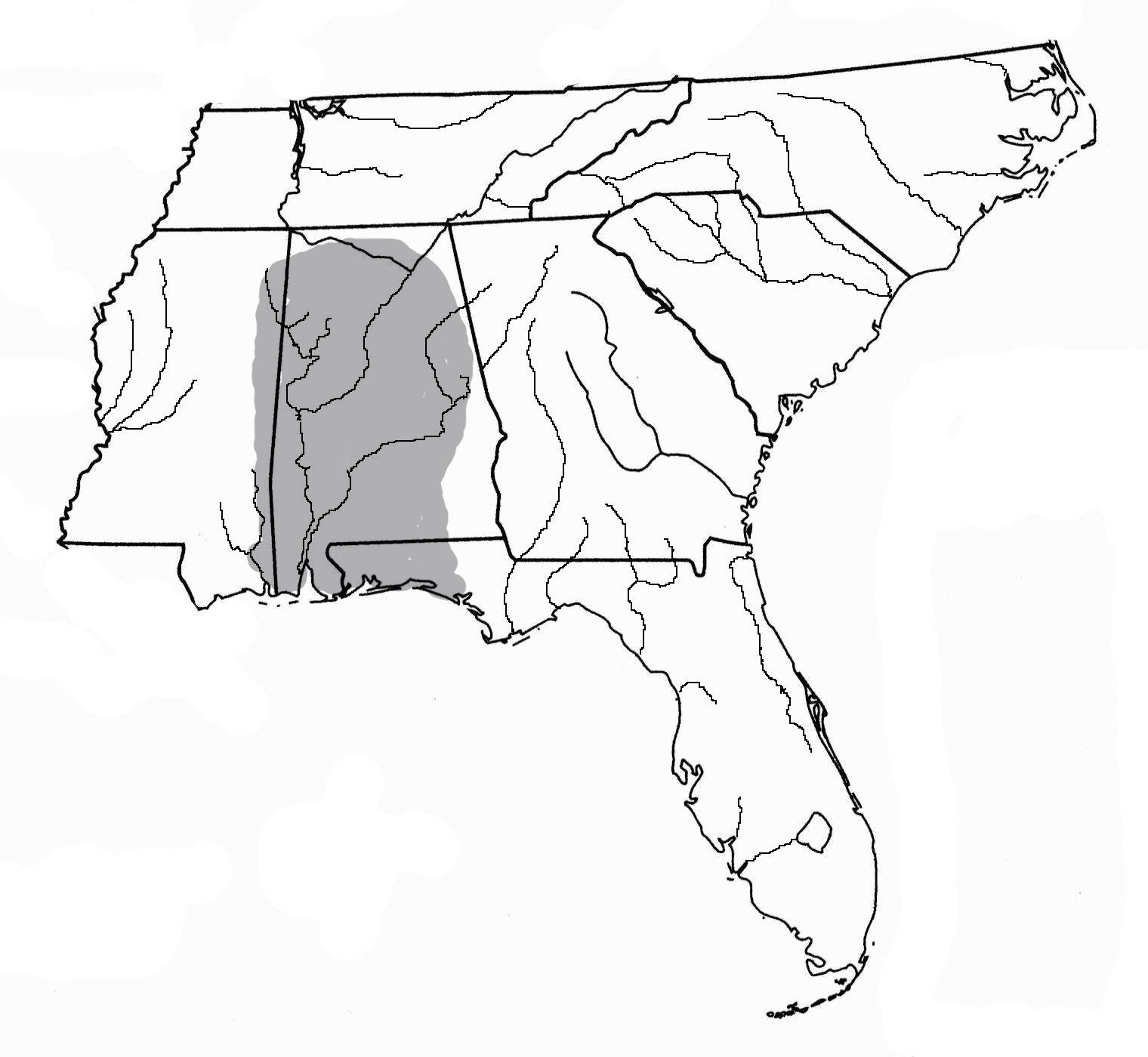
[i] McKenzie, Douglas H., Pottery Types of the Moundville Phase, Southeastern Archaeological Conference Bulletin No.2, 1965
(Left) Bruce Butts collection, (Bottom) Collections of the Division of Anthropology of the Alabama Museum of Natural History
RESEARCH: Phillips, Ford, and Griffin defined this type from their survey of Mississippi in 1951. Their definition of the type was reprinted in the Handbook of Mississippi Pottery Types, SEAC Bulletin No.7 in 1968.[i]
TEMPER: This is a coiled pottery type that is tempered with coarsely crushed shell particles. The lamination and poor wedging typical of shell tempering is present. Surface color is generally a light buff with little difference in core color. Some reddish paste has a gray core. Surfaces are smooth with a moderate polish. Weathering of the surface can cause roughness.
SURFACE DECORATION: The decoration of this type is similar to Carson Red on Buff except that there is a heavy white slip applied to the buff surface. There is no presence of black paint separating sections as with Avenue Polychrome. The bands of paint include red, white, and the buff of the vessel surface. Red paint was made from hematite and white from galena.
VESSEL FORM: Vessel forms include bottles, bowls and jars with an emphasis on bowls as the more frequent form. Nodena people were said to have buried a water bottle and a bowl with each body.
CHRONOLOGY: This type belongs to the Late Mississippian period Nodena culture of Arkansas.
GEOGRAPHIC DISTRIBUTION: This type is scattered across northwestern Mississippi and the adjacent portion of Arkansas.
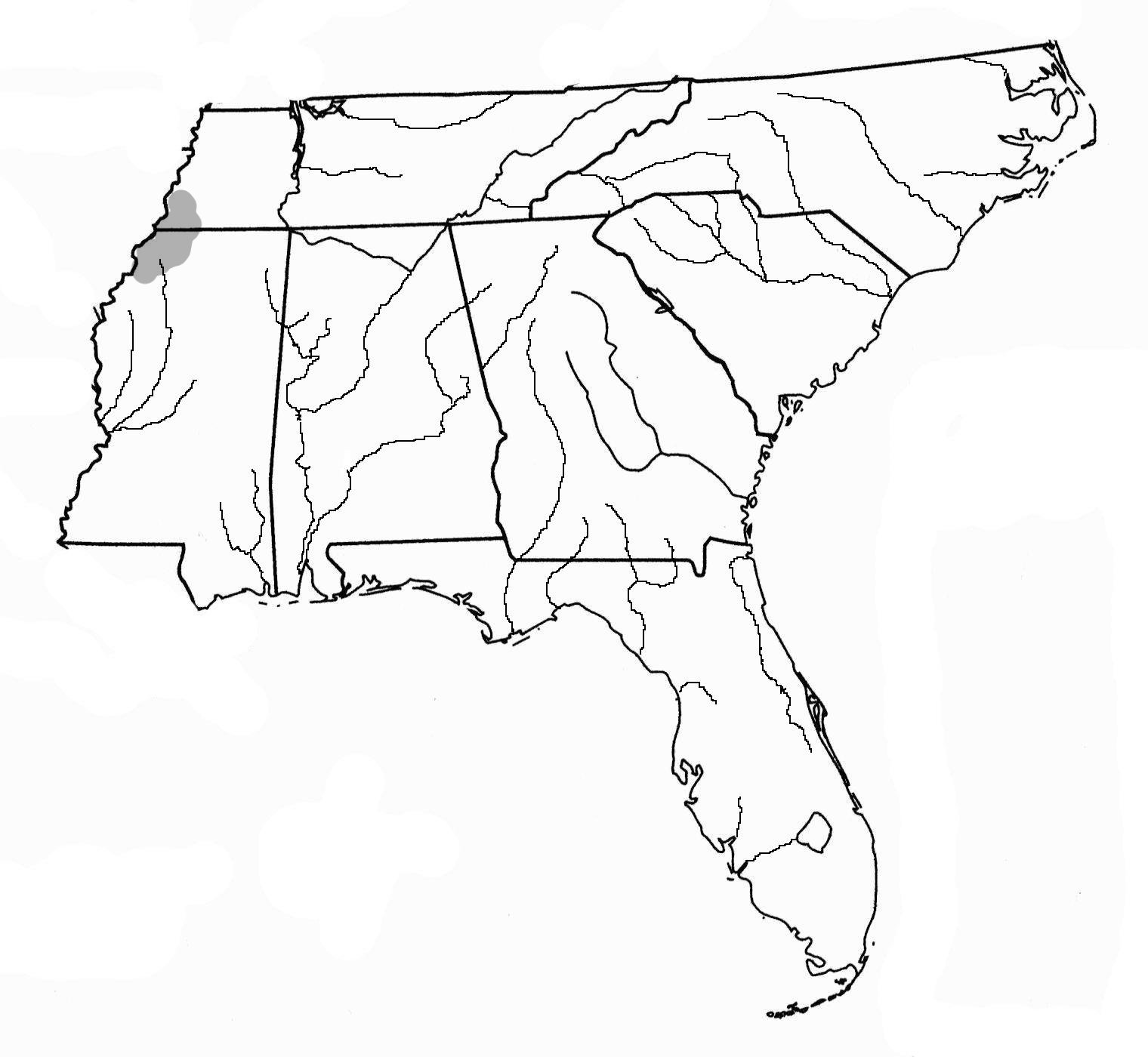
[i] Thorne, Robert M. and Bettye J. Broyles, Handbook of Mississippi Pottery Types, SEAC Bulletin No.7,1968
(Leftr) Jim Maus collection (Right) C.B. Moore 1910 Fig.31, Rose Mound, Cross Co., Arkansas
Mike Stokes Museum of Southeastern Indians
RESEARCH: Philip Phillips, James Ford, and James Griffin defined this type from their survey of Mississippi in 1951. Their definition of the type was reprinted in the Handbook of Mississippi Pottery Types, SEAC Bulletin No.7 in 1968.
TEMPER: This is a coiled pottery type that is tempered with coarsely crushed shell particles. The paste displays the typical lamination and poor wedging as do other shell-tempered pastes. The surfaces are smoothed to a polish and may have smoothing marks visible. The texture is a “soapy” feeling.
SURFACE DECORATION: Both the interior and exterior surfaces are covered with an orange or red slip.
VESSEL FORM: Known vessel forms include both deep and shallow bowls, “composite silhouette” bowls with globular bodies and angular, flaring rims, tall, small-necked bottles, deep bowls with recurved sides or bowls with flared rims, jars or beakers with in-slanting sides, jars with recurved rims, and tea pot forms. Bases may be flat, ring-shaped, or have supporting rings. Most rims are direct and undecorated, but some are decorated with nicking, notching, pinching, or punctating. Some pinched fillet rims are known. Lips are usually flat, but can also be rounded, thinned or beveled.
CHRONOLOGY: This pottery was used from the latter part of the Early Mississippian period until the early Late Mississippian period.
GEOGRAPHIC DISTRIBUTION: This type is known from many sites in northern Mississippi as well as Tennessee and the adjacent portions of Arkansas and Missouri.
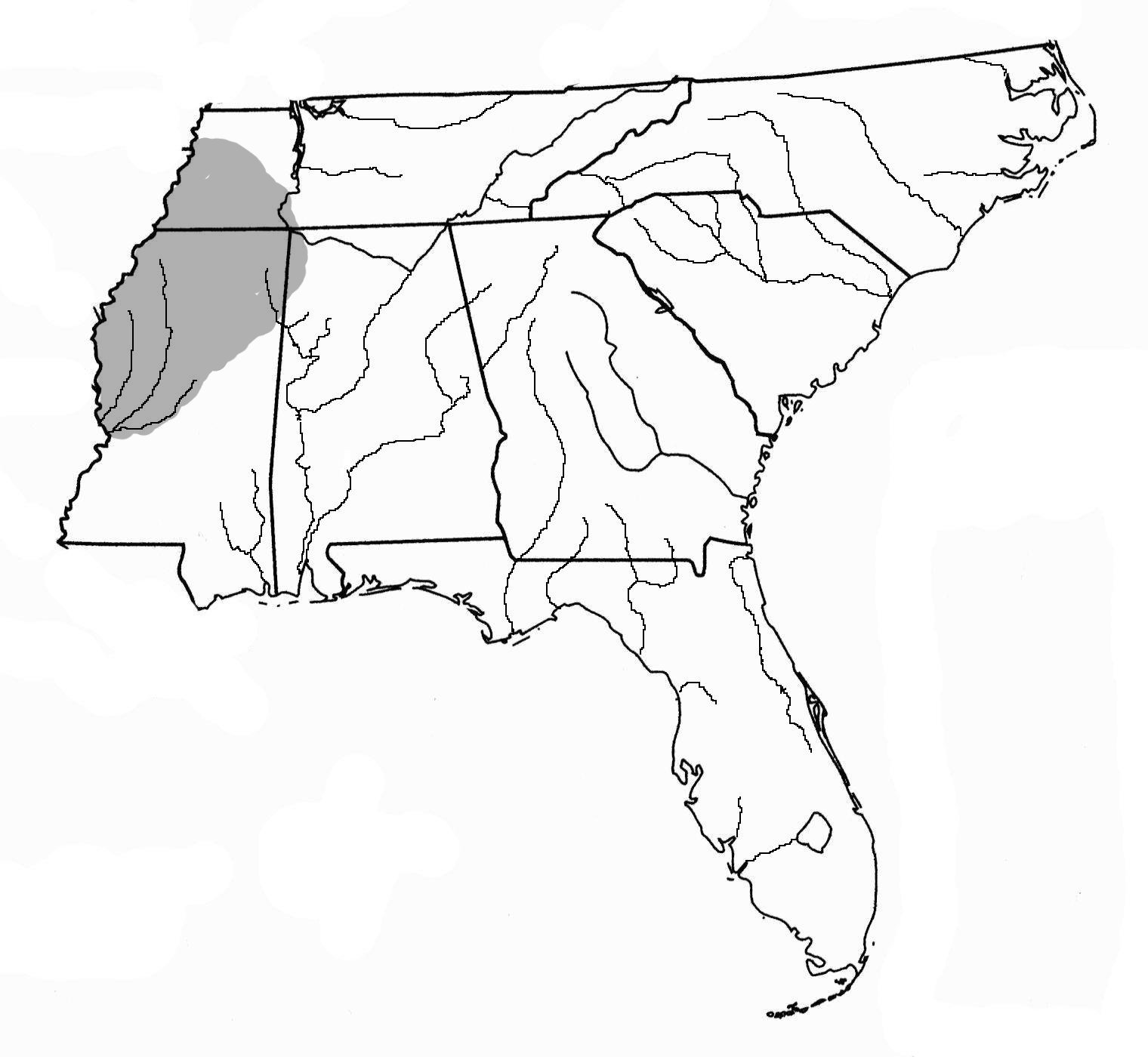
[i] Thorne, Robert M. and Bettye J. Broyles, Handbook of Mississippi Pottery Types, SEAC Bulletin No.7,1968